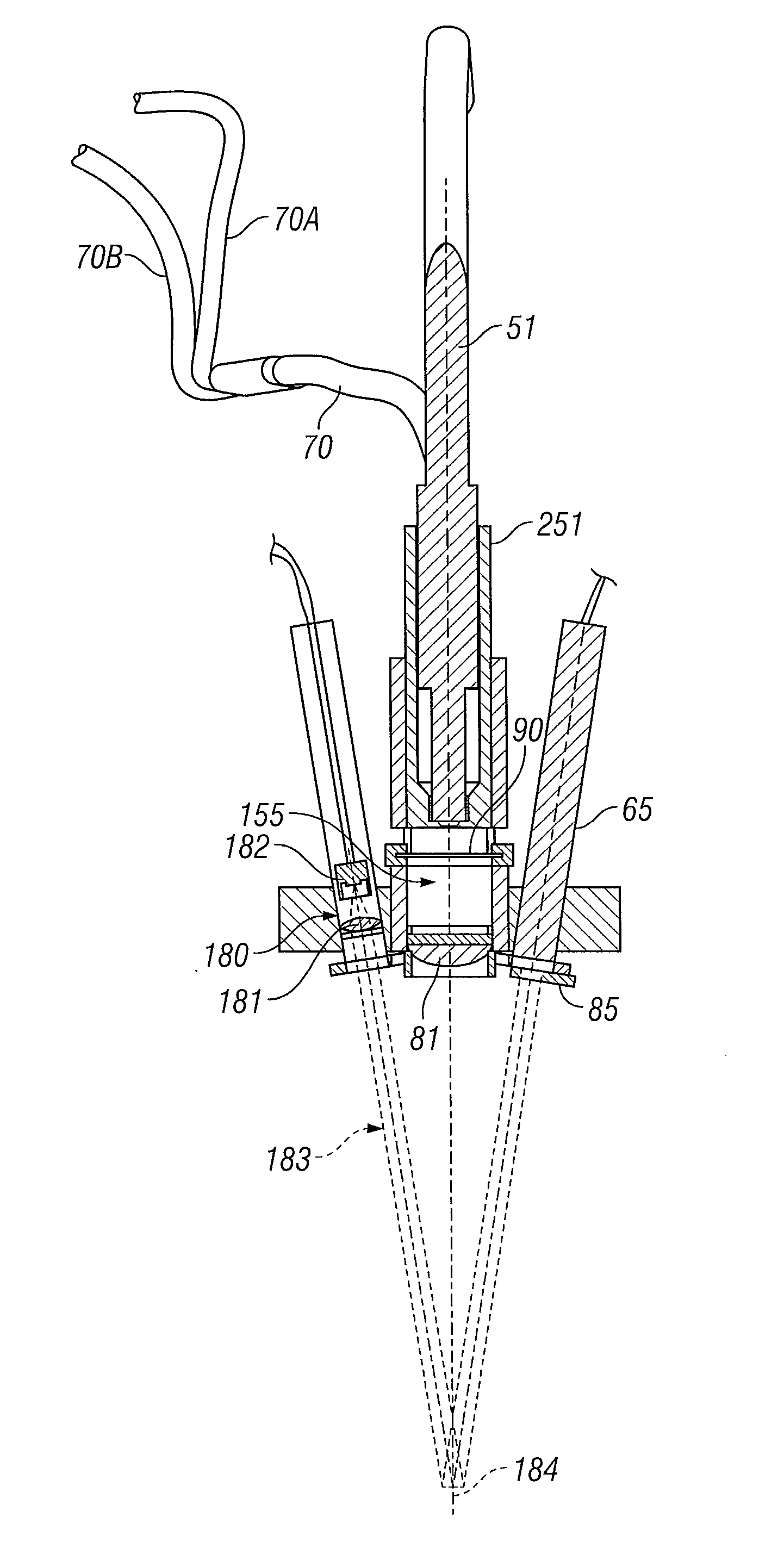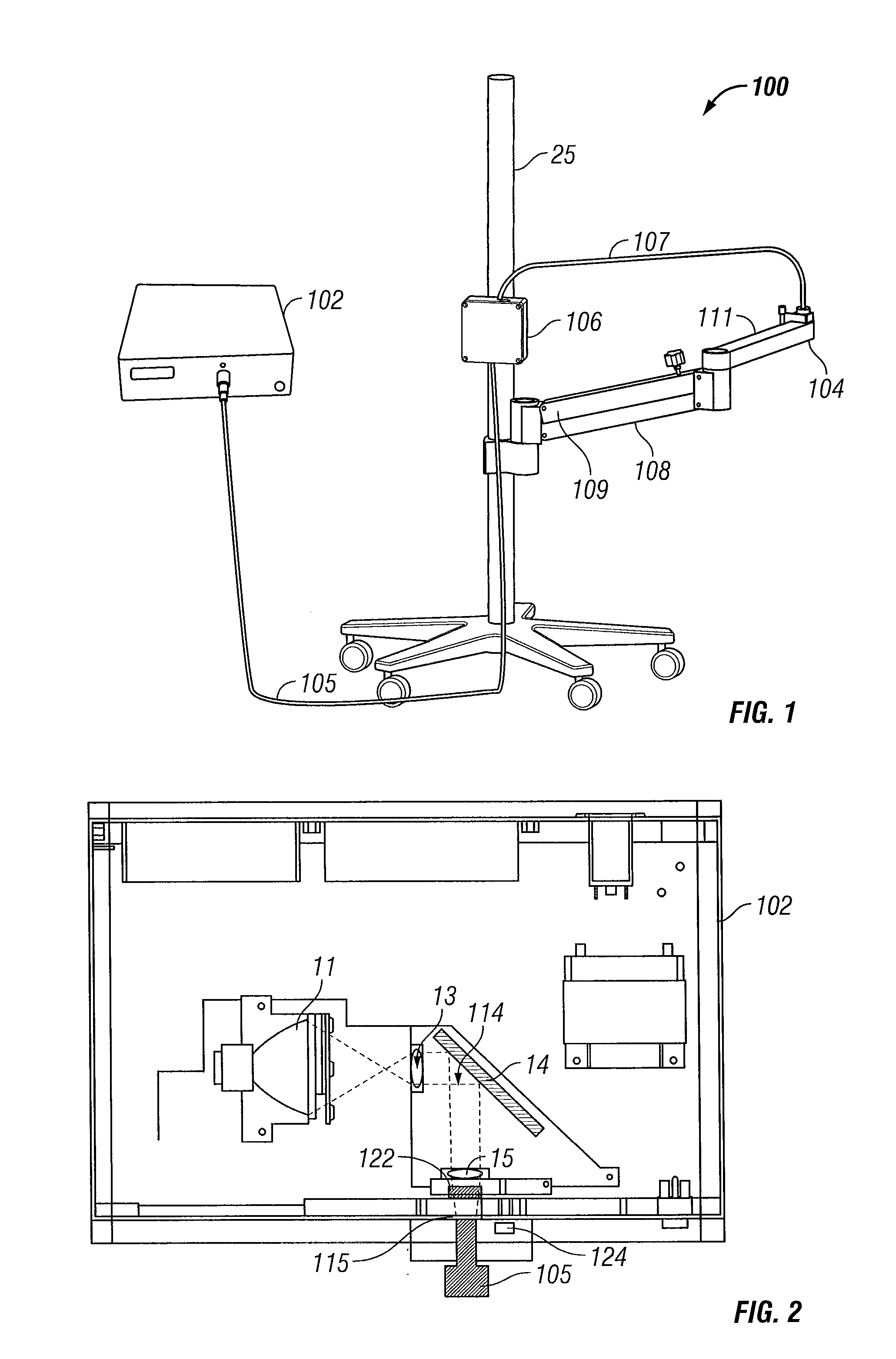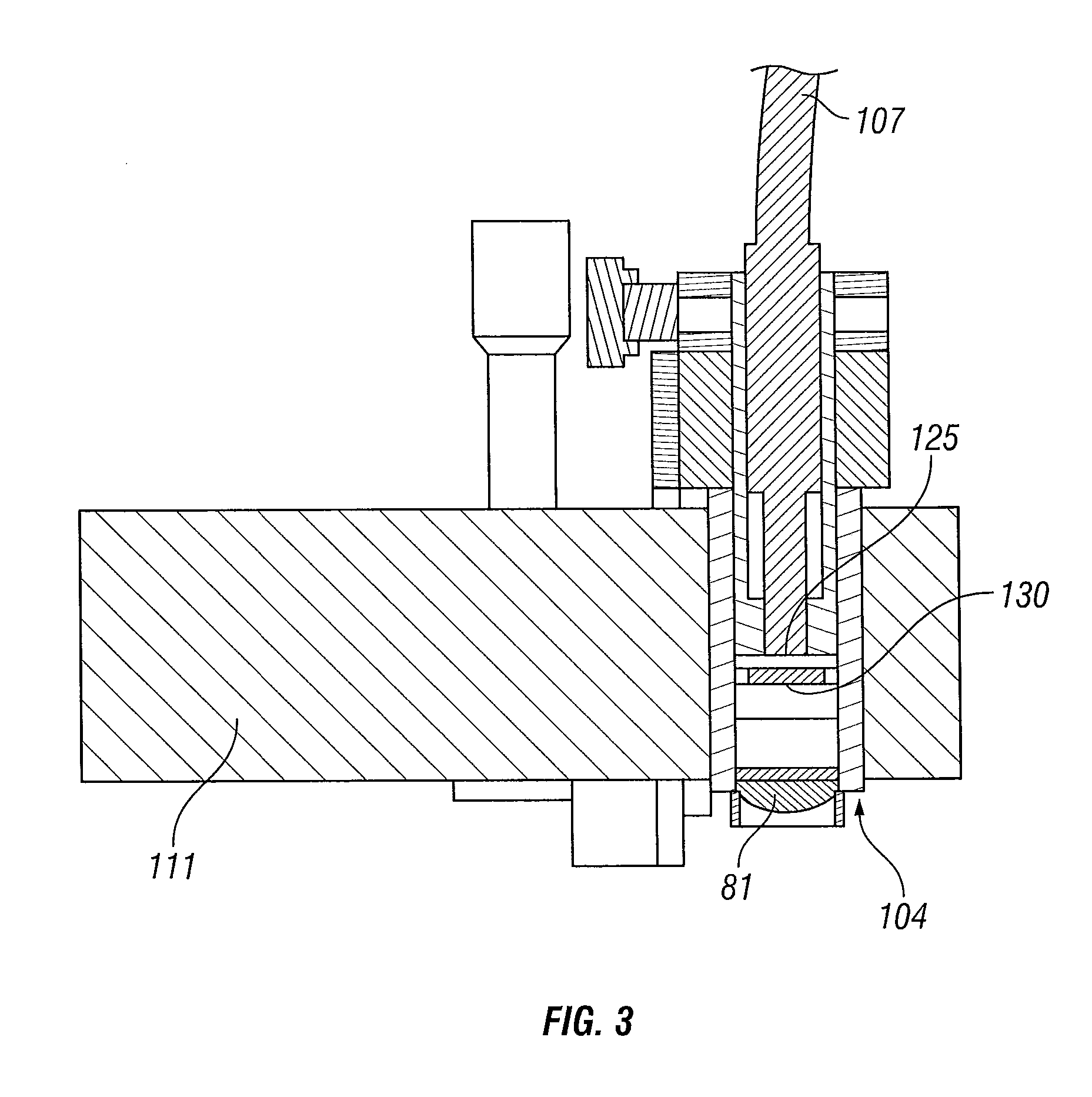Corneal treatment system and method
a treatment system and corneal technology, applied in the field of corneal treatment system and method, can solve the problems of denaturization and degradation of collagen, potentially toxic side effects, and most chemical cross-linking methods abandoned, so as to avoid surgical complications, improve the penetration of riboflavin, and reduce patient discomfort
- Summary
- Abstract
- Description
- Claims
- Application Information
AI Technical Summary
Benefits of technology
Problems solved by technology
Method used
Image
Examples
second embodiment
[0065]FIGS. 4 to 13 illustrate a bilateral system for photochemical ocular treatment such as corneal collagen cross-linking using riboflavin as a photosensitizer. Some components in this system are identical to components of the monocular system of FIGS. 1 to 3, and like reference numbers are used for like parts as appropriate. In this embodiment, UVA / blue light is used for the excitation energy. Referring to FIGS. 4 and 5, an illumination source unit 10 contains a multi-spectral light source 11 that delivers a user-selected excitation wavelength to bifurcated, UV transmissive liquid light guide 18. The light guide splits into separate light guide outputs 21 and 22 that are connected to illumination intensity adjustment module 30 mounted on a mobile pole stand comprised of pole 25 mounted on a base 23 with casters. Other support stands of different configuration may be used in place of pole 25 with base 23 in alternative embodiments. Outputs of module 30 are connected by light guide...
first embodiment
[0067]FIG. 5 illustrates the layout of the illumination source assembly with an ellipsoidal reflector short-arc lamp 11 as the light source, as in the In one embodiment this lamp is a 100 watt short-arc mercury or mercury halide lamp. In a different embodiment, this lamp is a 100 watt short-arc xenon lamp that is characterized by a lower UVA output and a greater continuum of high intensity blue wavelength light. Microprocessor 17 controls the opening and closing of shutter 12 that either blocks or allows passage of radiation emitted from the lamp. Shutter 12 is a mirrored aluminum material to reflect radiation away from the optical path. The reflective quality of the material prevents a heat build up on the shutter and potential transfer of heat to the connecting solenoid assembly. The shutter is affixed to a rotary solenoid 160 to affect the opening and closing operation. Rotary solenoids are high reliability components with normal lifetimes exceeding 1 million cycles. When shutte...
PUM
| Property | Measurement | Unit |
|---|---|---|
| working distance | aaaaa | aaaaa |
| working distance | aaaaa | aaaaa |
| wavelength range | aaaaa | aaaaa |
Abstract
Description
Claims
Application Information
 Login to View More
Login to View More - R&D
- Intellectual Property
- Life Sciences
- Materials
- Tech Scout
- Unparalleled Data Quality
- Higher Quality Content
- 60% Fewer Hallucinations
Browse by: Latest US Patents, China's latest patents, Technical Efficacy Thesaurus, Application Domain, Technology Topic, Popular Technical Reports.
© 2025 PatSnap. All rights reserved.Legal|Privacy policy|Modern Slavery Act Transparency Statement|Sitemap|About US| Contact US: help@patsnap.com



